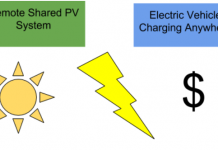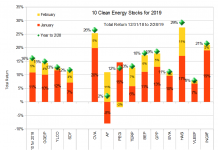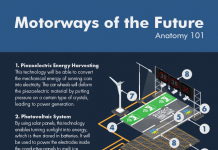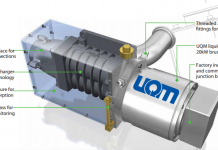John Petersen
On December 14th the National Research Council of the National Academy of Sciences issued a new report sponsored by the U.S. Department of Energy titled “Transitions to Alternative Transportation Technologies – Plug-in Hybrid Electric Vehicles.” The press release headline announcing the report proclaims, “PLUG-IN HYBRID VEHICLE COSTS LIKELY TO REMAIN HIGH, BENEFITS MODEST FOR DECADES.” In other words, grid-enabled vehicles, or GEVs, are nowhere near ready for prime time and investors that buy into the GEV hype can look forward to decades of pain and suffering. Serious investors who want to understand the electric vehicle space and the energy storage sector must make the time to read the entire 140 page report or be prepared to suffer the consequences. You can read a free online version here or download a PDF copy for $30.
The report considered plug-in hybrid electric vehicles with both a 10-mile electric only range (PHEV-10) and a 40-mile electric only range (PHEV-40). The summary results and conclusions from pages 7 through 9 of the report are:
- Lithium-ion battery technology has been developing rapidly, especially at the cell level, but costs are still high, and the potential for dramatic reductions appears limited. … Assembled battery packs currently cost about $1,700/kWh of usable energy. … Costs are expected to decline by about 35 percent by 2020 but more slowly thereafter. …
- Costs to a vehicle manufacturer for a PHEV-40 built in 2010 are likely to be about $18,000 more than an equivalent conventional vehicle, including a $14,000 battery pack. The incremental cost of a PHEV-10 would be about $6,300, including a $3,300 battery pack. In addition, some homes will require electrical system upgrades, which might cost more than $1,000. In comparison, the incremental cost of an HEV might be $3,000.
- PHEV-40s are unlikely to achieve cost-effectiveness before 2040 at gasoline prices below $4.00 per gallon, but PHEV-10s may get there before 2030. PHEVs will recoup some of their incremental cost, because a mile driven on electricity will be cheaper than a mile on gasoline, but it is likely to be several decades before lifetime fuel savings start to balance the higher first cost of the vehicles. Subsidies of tens to hundreds of billions of dollars will be needed for the transition to cost effectiveness. Higher oil prices or rapid reductions in battery costs could reduce the time and subsidies required to attain cost-effectiveness.
- At the maximum practical rate, as many as 40 million PHEVs could be on the road by 2030, but various factors (e.g., high costs of batteries, modest gasoline savings, limited availability of places to plug in, competition from other vehicles, and consumer resistance to plugging in virtually every day) are likely to keep the number lower. …
- PHEVs will have little impact on oil consumption before 2030 because there will not be enough of them in the fleet. More substantial reductions could be achieved by 2050. PHEV-10s will reduce oil consumption only slightly more than can be achieved by HEVs. …
- PHEV-10s will emit less carbon dioxide than nonhybrid vehicles, but more than HEVs after accounting for emissions at the generating stations that supply the electric power. PHEV-40s are more effective than PHEV-10s, but the GHG [greenhouse gas] benefits are small unless the grid is decarbonized with renewable energy, nuclear plants, or fossil fuel fired plants equipped with carbon capture and storage systems.
- No major problems are likely to be encountered for several decades in supplying the power to charge PHEVs, as long as most vehicles are charged at night. …
- A portfolio approach to research, development, demonstration, and, perhaps, market transition support is essential. …
The only other point I would have included in the summary is:
“It is the committee’s opinion that [the DOE’s battery price goals] beyond 2012 are extremely aggressive and are unlikely to be reached by the target date or even for a significant time beyond.” (Page 22 of the report)
Overall, I applaud the report’s frank and unbiased discussion of the challenges inherent in the commercialization of GEVs and the decades it will take before GEV technologies can make a meaningful difference in either oil imports or CO2 emissions. Its two big shortcomings were (1) the failure to consider natural gas vehicles, or NGVs as an alternative, and (2) the failure to consider critical raw material supply issues; most notably the availability of heavy rare earth metals for the permanent magnet motors that will drive a wholly or partly electrified transportation system.
The introduction starts by noting, “transportation is responsible for more than two-thirds of U.S. oil consumption, and about 60 percent of the oil we use must be imported.” The rough parity between these two figures leads to the inescapable conclusion that we could pretty much eliminate oil imports if we could eliminate the use of gasoline and diesel fuel for transportation. While the eco-religious among us insist that GEVs are the only way to achieve this laudable goal, the fact is a simple combination of HEV and NGV technologies can get us to the same point faster, cheaper and cleaner because:
- HEVs slash fuel consumption and CO2 emissions by up to 40% for less than half the expected cost of a PHEV-10;
- America is blessed with enormous natural gas reserves that could be used in transportation;
- Natural gas is much cheaper than oil when you run a basic thermal equivalency comparison;
- A natural gas powered engine produces 30% less CO2 per mile than a comparable gasoline powered engine;
- Each gallon of gasoline or diesel replaced by natural gas will reduce oil imports by a like amount;
- Money spent on natural gas helps the domestic economy while money spent on oil imports benefits foreign powers;
- The current cost of an NGV is roughly equivalent to the expected cost of a basic PHEV-10;
- NGV technologies offer significant opportunities for real economies of scale where GEVs don’t; and
- Using a combination of NGV and HEV technologies will be cleaner than plugging a GEV into an average utility.
There are several good reasons why 20% of all new light vehicle purchases in Italy are NGVs. The technology is available today, readily scalable, relatively inexpensive and very cost-effective. It’s exactly what the consumer is looking for, particularly in recessionary times when splashing out a 50% to 100% premium for eco-bling seems fiscally imprudent.
For a detailed discussion of the rare earth metals supply constraints that will almost certainly make a cruel joke of the current GEV hype, readers should review the work of Seeking Alpha contributor Jack Lifton who has forgotten more about that topic than I’ll ever learn. The quick and dirty summary is that 95% of the global market for rare earth metals is controlled by China which expects to use substantially all of its rare earth metal production to satisfy domestic demand within a few years.
I’m an oddball among alternative energy bloggers because I believe that gre
en in my wallet is more important than green in my philosophy. My biggest worry is that six billion people want a small piece of the lifestyle that 500 million of us have and usually take for granted. While the teeming masses once toiled in poverty and ignorance and accepted the inevitability of their misery, the information and communications technology revolution changed all that. For the first time in human history the mass of the world’s poor know that there is something better than mere subsistence and they’re working very hard to earn a place at the table. The trick will be finding a way to raise the standard of living in developing economies without crushing the standard of living in developed economies. For that to happen without catastrophic conflict and horrific environmental consequences, the world must find relevant scale solutions for persistent shortages of water, food, energy and virtually every commodity you can imagine. In other words, the cardinal sins of extravagance and gluttony can no longer be tolerated in any of their pernicious forms.
I’m also an incurable optimist who believes that “In America we get up in the morning, we go to work and we solve our problems.” (From The Lost Constitution by William Martin) We can’t solve persistent global shortages of water, food, energy and commodities without first minimizing waste. We also can’t wait for miraculous GEV technologies to eventually solve basic transportation problems that become more pressing with each passing day. We have to go to work today with the toolbox we own and be ready to replace our tools with better ones when they become available.
When we back away from the GEV hype and rationally analyze the myriad technical, economic and environmental issues that must be solved before GEVs can be cost-effective, it becomes clear that the baby steps including stop-start engine systems, HEVs and NGVs are where the business growth will lie for the next decade. The principal beneficiaries of the short-term trends will be established automotive battery manufacturers like Exide Technologies (XIDE) and Johnson Controls (JCI), advanced lead-acid battery developers like Axion Power International (AXPW.OB), HEV technology leaders like Toyota (TM) and NGV technology leaders like Fuel Systems Solutions (FSYS). In a decade or two when long promised advances in battery technology are historical fact rather than forecast and GEVs have moved away from technology’s bleeding edge, the best investment choices may be different. But I plan to be retired by then and living off my fixed income investments.
Disclosure: Author is a former director of Axion Power International (AXPW.OB) and holds a large long position in its stock. He also holds a small long position in Exide Technologies (XIDE).









At least in the States, it is probably most cost effective to focus on switching high use, heavy duty vehicles to natgas rather the light duty vehicles, LDVs. Initial effort should probably be on intra-city and school buses and waste disposal trucks. Another good target could be regional, fleet trucks.
Switching these vehicles to natgas over a 10 year period would have multiple benefits over LDVs, including:
1. Far fewer vehicles would be involved, thus lower total cost for vehicle premium. There are probably on the order of 1 to 2 million vehicles in the fleets mentioned versus some 220 million LDVs.
2. Far less fueling infrastructure cost.
3. These vehicles are almost exclusively diesel powered. Converting to natgas will have a substantial impact on carbon black emissions.
4.These vehicles tend to have high utilization and low fuel efficiency, thus the impact on diesel fuel usage will be substantial.
5.The vehicles are large and can readily accept the larger fuel containers needed for natgas.
6. Natgas for LDVs will require substantial market education and will probably experience more resistance.
At the same time, fuel consumption of LDVs can and will likely be improved substantially over the next decade by focusing on: improved ICE, transmission, aerodynamics and parasitic load reduction technologies; broader use of diesel engines for LDVs; and of course HEVs.
Broadly speaking, even without aggressive implementation such an approach, with differing fuel orientations for LDVs versus heavy duty, high usage vehicles, could reduce liquid fuel consumption by 30% to 50% in the USA by 2030. If implemented aggressively and combined with “some” biofuel, it is not unreasonable to conjecture a USA with minimal liquid fuel imports by approximately 2030.
I would add one more observation regarding implementation of PHEVs. Strong government subsidies of PHEVs, particularly if to the detriment of other, more cost effective technologies may be “the worst of all choices” other than doing nothing.
I’m with you Mike. There’s nothing in the world to whet my appetite like low hanging fruit, which is one of the things I find so frustrating with the GEV proposals. Let’s do the easy stuff first and nail down the easy benefits before we go looking for exotic solutions that will take decades to implement.